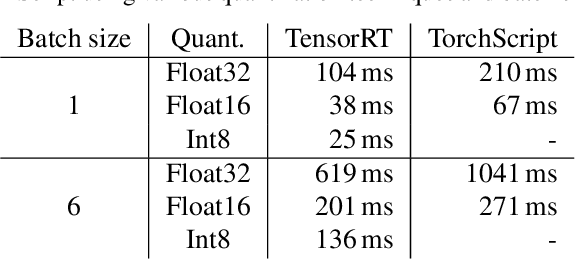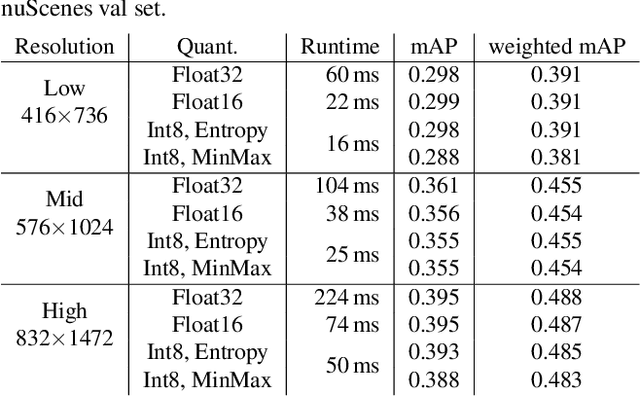Lukas Stäcker
Cross-Dataset Experimental Study of Radar-Camera Fusion in Bird's-Eye View
Sep 27, 2023



Abstract:By exploiting complementary sensor information, radar and camera fusion systems have the potential to provide a highly robust and reliable perception system for advanced driver assistance systems and automated driving functions. Recent advances in camera-based object detection offer new radar-camera fusion possibilities with bird's eye view feature maps. In this work, we propose a novel and flexible fusion network and evaluate its performance on two datasets: nuScenes and View-of-Delft. Our experiments reveal that while the camera branch needs large and diverse training data, the radar branch benefits more from a high-performance radar. Using transfer learning, we improve the camera's performance on the smaller dataset. Our results further demonstrate that the radar-camera fusion approach significantly outperforms the camera-only and radar-only baselines.
RC-BEVFusion: A Plug-In Module for Radar-Camera Bird's Eye View Feature Fusion
May 25, 2023



Abstract:Radars and cameras belong to the most frequently used sensors for advanced driver assistance systems and automated driving research. However, there has been surprisingly little research on radar-camera fusion with neural networks. One of the reasons is a lack of large-scale automotive datasets with radar and unmasked camera data, with the exception of the nuScenes dataset. Another reason is the difficulty of effectively fusing the sparse radar point cloud on the bird's eye view (BEV) plane with the dense images on the perspective plane. The recent trend of camera-based 3D object detection using BEV features has enabled a new type of fusion, which is better suited for radars. In this work, we present RC-BEVFusion, a modular radar-camera fusion network on the BEV plane. We propose BEVFeatureNet, a novel radar encoder branch, and show that it can be incorporated into several state-of-the-art camera-based architectures. We show significant performance gains of up to 28% increase in the nuScenes detection score, which is an important step in radar-camera fusion research. Without tuning our model for the nuScenes benchmark, we achieve the best result among all published methods in the radar-camera fusion category.
Deployment of Deep Neural Networks for Object Detection on Edge AI Devices with Runtime Optimization
Aug 18, 2021



Abstract:Deep neural networks have proven increasingly important for automotive scene understanding with new algorithms offering constant improvements of the detection performance. However, there is little emphasis on experiences and needs for deployment in embedded environments. We therefore perform a case study of the deployment of two representative object detection networks on an edge AI platform. In particular, we consider RetinaNet for image-based 2D object detection and PointPillars for LiDAR-based 3D object detection. We describe the modifications necessary to convert the algorithms from a PyTorch training environment to the deployment environment taking into account the available tools. We evaluate the runtime of the deployed DNN using two different libraries, TensorRT and TorchScript. In our experiments, we observe slight advantages of TensorRT for convolutional layers and TorchScript for fully connected layers. We also study the trade-off between runtime and performance, when selecting an optimized setup for deployment, and observe that quantization significantly reduces the runtime while having only little impact on the detection performance.
 Add to Chrome
Add to Chrome Add to Firefox
Add to Firefox Add to Edge
Add to Edge